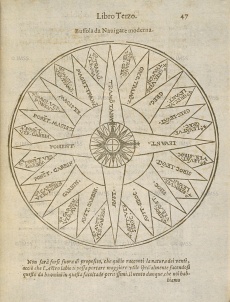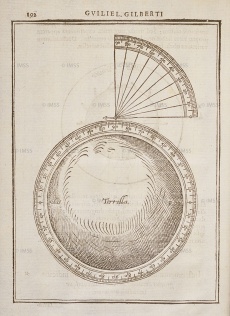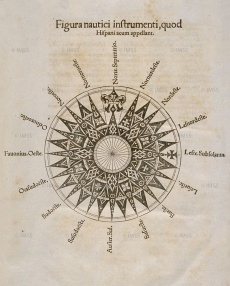Compass
From Inventions
m (1 revision) |
|||
| Line 1: | Line 1: | ||
{{Template invention | {{Template invention | ||
| - | |nome= | + | |nome= |
| + | From the Latin "buxula" (box), derived in turn from "buxus" (boxwood). The name, in use since the Middle Ages, derives from the boxwood case that housed the magnetized needle. | ||
| - | |descrizione= | + | |descrizione= |
| + | The magnetic compass is an orientation instrument that consists of a magnetic needle pivoting freely around a pin, which always points north. Probably invented in China, the compass was introduced into Europe by the Arabs in the twelfth century. Due to misinterpretation of a Latin text by Flavio Biondo (''Amalphi in Campania veteri magnetis usus inventus a Flavio traditur''), the compass was believed in Renaissance times to have been invented by Flavio Gioia from Amalfi. The instrument was used mainly for navigation and surveying. From it comes the name of one of the most widely disseminated surveying instruments of the sixteenth century, the so-called bussola, or [[surveying compass]]. In sixteenth-century treatises it is also called "bossolo" or "bussolo della calamita". | ||
|inventore= | |inventore= | ||
Revision as of 15:49, 11 November 2009
From the Latin "buxula" (box), derived in turn from "buxus" (boxwood). The name, in use since the Middle Ages, derives from the boxwood case that housed the magnetized needle.
Historic Period
10th-12th C.
Description
The magnetic compass is an orientation instrument that consists of a magnetic needle pivoting freely around a pin, which always points north. Probably invented in China, the compass was introduced into Europe by the Arabs in the twelfth century. Due to misinterpretation of a Latin text by Flavio Biondo (Amalphi in Campania veteri magnetis usus inventus a Flavio traditur), the compass was believed in Renaissance times to have been invented by Flavio Gioia from Amalfi. The instrument was used mainly for navigation and surveying. From it comes the name of one of the most widely disseminated surveying instruments of the sixteenth century, the so-called bussola, or surveying compass. In sixteenth-century treatises it is also called "bossolo" or "bussolo della calamita".
Images
Pedro Nunes. Opera quae complectuntur primum duos libros, in quorum priore tractantur pulcherrima problemata, in altero traduntur ex mathematicis disciplinis regulae & instrumenta artis nauigandi, quibus uaria rerum astronomicarum phainomena circa coelestium corporum motus explorare possumus: deinde Annotationes in Aristotelis problema mechanicum de motu nauigij ex remis , Basileae, 1566. |
Author of the entry: Filippo Camerota



